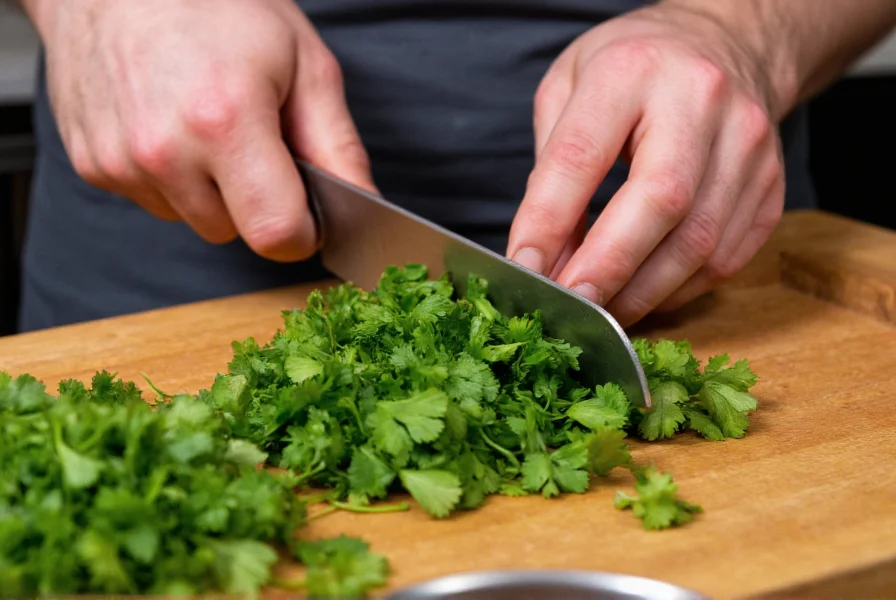Understanding what is maydanoz begins with recognizing its botanical identity. Scientifically classified as Petroselinum crispum, this biennial herb thrives in temperate climates and has been cultivated for over 2,000 years. Ancient Greeks originally used it for ceremonial purposes before Mediterranean cultures adopted maydanoz for culinary applications. Today, it ranks among the world's most widely consumed herbs, with Turkey maintaining particularly strong cultural connections to this vibrant green plant.
Botanical Characteristics and Varieties
Maydanoz demonstrates distinctive botanical features that differentiate it from similar herbs. The plant typically reaches 30-100 cm in height with triangular-shaped leaves arranged in a rosette pattern. Its hollow stems and yellow-green flowers further distinguish mature specimens. Two primary cultivated varieties exist:
| Variety | Leaf Structure | Flavor Profile | Common Applications |
|---|---|---|---|
| Curly Leaf Parsley | Tightly curled, ruffled appearance | Milder, grassier taste | Garnishing, tabbouleh, soups |
| Italian (Flat-Leaf) Parsley | Smooth, flat leaves | Bolder, more robust flavor | Cooking bases, sauces, Mediterranean dishes |
Many home gardeners wonder how to grow maydanoz successfully. The herb prefers well-drained soil with pH between 6.0-7.0 and requires 4-6 hours of daily sunlight. Seeds germinate slowly (2-4 weeks), making transplanting established seedlings more efficient for beginners. Consistent moisture without waterlogging proves essential for optimal growth. Container gardening works effectively for urban settings, with regular harvesting encouraging bushier regrowth.
Nutritional Composition and Health Research
Nutritionally, maydanoz delivers exceptional value per calorie. A single cup (60g) of chopped parsley provides:
- Over 100% of daily vitamin K requirements
- Nearly 90% of recommended vitamin C intake
- Approximately 50% of daily vitamin A needs
- Significant potassium, iron, and folate content
Recent studies published in the Journal of Agricultural and Food Chemistry confirm maydanoz contains apigenin and luteolin—potent antioxidants showing promise in cellular research. While maydanoz health benefits shouldn't replace medical treatment, its nutrient density supports overall wellness when incorporated into balanced diets. Traditional Turkish medicine has long utilized maydanoz for digestive support, though modern research continues investigating these applications.
Culinary Applications Across Global Cuisines
Chefs worldwide leverage maydanoz differently based on regional traditions. In Turkish cooking, fresh maydanoz appears in koru salad, meat dishes, and as essential component of oturma (herb platters). Middle Eastern cuisines feature it prominently in tabbouleh and fattoush salads. French cuisine uses flat-leaf variety in bouquet garni while Italian cooking incorporates it into gremolata and pasta dishes.
When substituting maydanoz, consider these alternatives based on intended use:
- For garnishing: Cilantro (different flavor profile but similar visual appeal)
- For cooking bases: Celery leaves or chervil
- For tabbouleh: A mix of mint and dill

Storage Techniques and Seasonal Availability
Maximizing maydanoz freshness requires proper storage. Refrigerate unwashed stems in airtight containers with damp paper towels for up to two weeks. Alternatively, treat like cut flowers by placing stems in water and covering leaves with a plastic bag. Freezing chopped maydanoz in olive oil preserves flavor for cooked applications. While available year-round in most markets, peak season runs from late spring through early fall when flavor intensity reaches its maximum.
Common Misconceptions Clarified
Several myths surround maydanoz that deserve clarification. Despite popular belief, parsley doesn't significantly neutralize bad breath—it merely masks odors temporarily. The notion that maydanoz replaces cilantro proves inaccurate as their flavor compounds differ substantially. Additionally, while parsley contains apiol (a compound once used medicinally), consuming culinary amounts poses no health risks for most individuals.
What is the English translation of maydanoz?
Maydanoz translates directly to parsley in English. This term specifically refers to the herb known scientifically as Petroselinum crispum, distinguishing it from other similar-looking plants like cilantro (which Turks call dereotu).
Can you eat maydanoz stems?
Yes, you can eat maydanoz stems, though they're typically more fibrous than the leaves. Finely chop the lower third of stems for cooked dishes like soups and stews where texture softens during preparation. The upper, more tender portions work well in salads and fresh applications.
How does maydanoz differ from cilantro?
Maydanoz (parsley) and cilantro have distinct flavor profiles and botanical classifications. Parsley offers a grassier, more neutral taste while cilantro delivers a citrusy, sometimes soapy flavor (for those with the OR6A2 gene). Visually, parsley leaves are darker green with either curly or flat shapes, whereas cilantro leaves are more rounded with scalloped edges.
Is maydanoz safe for pets?
Small amounts of maydanoz are generally safe for dogs and cats as occasional treats. However, excessive consumption may cause digestive upset due to essential oils. Consult your veterinarian before regularly incorporating herbs into pet diets, especially for animals with kidney conditions since parsley contains compounds that could exacerbate these issues.
What are traditional Turkish uses for maydanoz?
In Turkish cuisine, maydanoz features prominently in salads like koru salad, herb platters (oturma), and as essential ingredient in meat dishes including köfte. Turks also use it medicinally in traditional practices—steeping fresh maydanoz in hot water as digestive aid and incorporating it into spring cleansing rituals. The herb appears frequently in regional dishes from Aegean and Mediterranean coastal areas.
Conclusion
Understanding what is maydanoz extends beyond simple translation to appreciating its botanical uniqueness, nutritional value, and cultural significance. This humble herb bridges culinary traditions across continents while delivering measurable health benefits through its exceptional nutrient density. Whether you're exploring Turkish recipes requiring fresh maydanoz or seeking to enhance your home garden with versatile herbs, recognizing its distinctive characteristics ensures proper usage and appreciation. As research continues uncovering new applications for this ancient plant, maydanoz maintains its rightful place as one of the world's most valuable culinary herbs.










 浙公网安备
33010002000092号
浙公网安备
33010002000092号 浙B2-20120091-4
浙B2-20120091-4